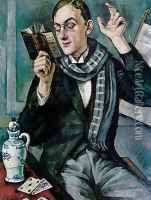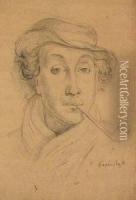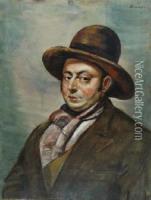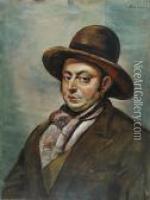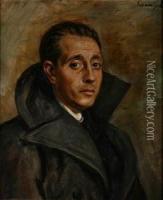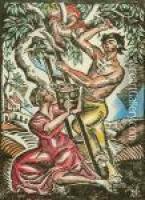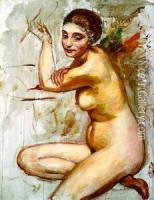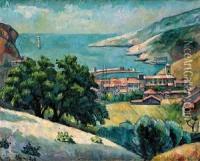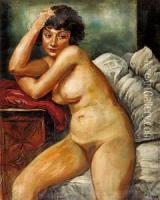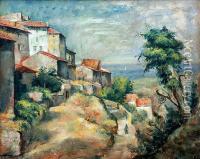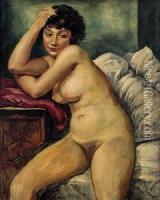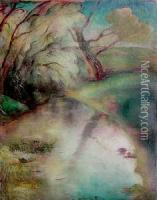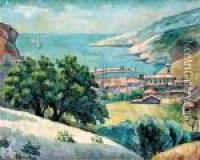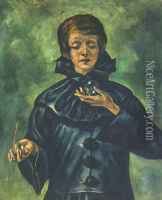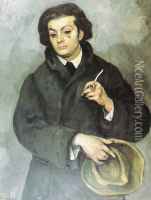Roman Kramsztyk Paintings
Roman Kramsztyk was a notable Polish Jewish painter, born on August 18, 1885, in Warsaw, then part of the Russian Empire. He is recognized for his significant contributions to Polish art during the early 20th century, particularly within the realm of Realism.
Kramsztyk was raised in an intellectual family environment, which fostered his early interest in the arts. He studied at the Academy of Fine Arts in Kraków under the tutelage of Leon Wyczółkowski, and later in Warsaw under the guidance of Konrad Krzyżanowski. His education further expanded throughout Europe, including studies at the Academy of Fine Arts in Munich and in Paris at the Académie Colarossi, where he was influenced by the works of the Impressionists and Post-Impressionists.
Throughout his career, Kramsztyk became known for his portraits, nudes, and genre scenes, often characterized by a sensitive approach to light and color. His work displayed a deep psychological insight into his subjects, and he was praised for his ability to capture the mood and inner life of the people he painted.
During the interwar period, Kramsztyk was an active member of the artistic community in Warsaw. He participated in numerous exhibitions and was a co-founder of the Jewish Society for the Encouragement of the Fine Arts. His art was appreciated by both Jewish and non-Jewish audiences, and he played a crucial role in the cultural life of the city.
Tragically, Kramsztyk's life and career were cut short during the Holocaust. He was confined to the Warsaw Ghetto after the Nazi occupation of Poland. Despite the horrific conditions, he continued to create art, documenting the suffering and daily life within the Ghetto. Roman Kramsztyk was ultimately killed during the liquidation of the Ghetto in August 1942. His legacy endures through his artworks, which serve as a poignant testament to his talent and the time in which he lived.
